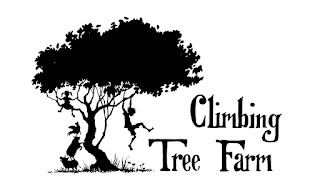Modern Farmer is one of our favorite farmy reads.
It was a real thrill to be featured in Modern Farmer Online!
Thank you Daniel Luzer, Morgan Ione Yeager, and Modern Farmer!
Hog Wild: Raising Instinctual Pork
Photography by Morgan Ione Yeager

These aren't your average pigs.
And it’s not just any pork. While much of the appeal of “natural” meat, at least as far as advertising goes, is to return to the way Americans raised animals 60 years ago, on small farms with rusty tractors and pig pens, the Gails are attempting something more revolutionary: To raise pigs the way our peasant ancestors did — freely, and in the woods.
This means that the Gails’ pigs have an uncommon diet. Most of their food is foraged from the land around them. The pigs are kept in small groups in pens between a quarter of an acre and 2 acres in size, rotating from pen to pen depending on the amount of food available.

Instinctual pork is a relatively new trend. Farmer Joel Salatin, profiled in Michael Pollan in The Omnivores Dilemma, raises pigs on his Shenandoah Valley farm this way. Animal scientist Temple Grandin has also done work in this area. But trying to go out and buy pork for dinner and know it’s been raised like this is impossible for the average consumer. But now, thanks to farmers like the Gails, this is changing.
About half of the Gails’ pigs’ diet consists of plants growing around them. Another quarter comes from supplemental crates of expired milk, buttermilk, and whey given to the farmers from local dairies — giving the goods away is cheaper than throwing them out. This means that the Gails get 300 gallons of whey every ten days and 100 to 200 gallons of out-of-date milk a week to feed the 50 to 75 pigs they keep at a time. (They slaughter 1 to 3 a week.) The final quarter of the pigs’ diet comes grain. The Gails are using some commercial grain now, but plan to plant more foraging crops in future years — turnips, pumpkins and rye — and wean the pigs from feed altogether.
“Pigs are meant to forage. That’s how wild pigs survive”
And this sort of diet does change the taste of the pork. “What you get is a different quality of fat,” Stine says. Pigs raised instinctually have access to antioxidants and omega-3 fatty acids, which are good for fighting disease and maintaining healthy metabolism. This is rare in commercially-raised pork.

Colby, 33, and Schuyler, 31, met while teenagers at summer camp in the Pacific Northwest. Longtime gardeners, they first began farming with a few sheep part-time on Schuyler’s grandmother’s farm in Berlin, New York in 2005. But once the animals started to breed and Colby and Schuyler were producing more lamb than they needed, they branched out into full time farming.
While the flavor of this kind of pork is unrivaled, how affordable is it for the farmers? The upfront costs are high, particularly because the farmer needs to have a lot of land in order to move the animals every few days so the pigs can forage food. As Colby explains, however, the quality of the land doesn’t matter much. Any property will do. Farmers also don’t need much infrastructure. “We think that this is a better way to go about it than, you know, taking out a mortgage to build big barns like others do it,” Schuyler says.
Commercial farmers can produce thousands of pounds of meat a day. “For large farms the day-to-day costs go way down,” Stine says. Instinctual pork farmers need larger plots of land and fancier food options. But once they have it, Stine explains, the price of running such a thing also goes way down. “It comes down to numbers and getting the right ratio.” Colby and Schuyler can get about $4.25 a pound for many breeds of their instinctually raised pork. “Commercially raised pork is more like pennies on the pound, but they make up for that in volume. It’s a classic case of a quality over quantity.”

The Gails also raise sheep and chickens at Climbing Tree

Schulyer and Colby Gail with their two children.
Schulyer became a vegetarian as a kid because she thought animal cruelty was wrong. Despite the fact that she started eating meat again two years ago, she still believes she’s avoiding being cruel to her animals.
“Our pigs are never nervous,” she says. “Our pigs are never scared.”
(A previous version of this article misstated the acreage of Climbing Tree Farm. It is 390 acres. We also also misstated the length of time the pigs are kept fenced in one area. It depends on the amount of food available. We also misstated the gallons of whey and milk the Gails receive. They get 300 gallons of whey every ten days and 100 to 200 gallons of milk each week. We also misstated the foraging crops the Gails plan to plant. They will not plant soybeans. We also misstated the diet of the pigs. They do not eat hops, but local barley. We also misstated the type of meat the Gails raised when starting out. They raised sheep. Finally, we also misstated the price of the Gails’ pork. It is around $4.25. We regret the errors.)
See the article in its original location here:
http://modernfarmer.com/2013/11/hogs-untied-raising-instinctual-pork/


No comments:
Post a Comment